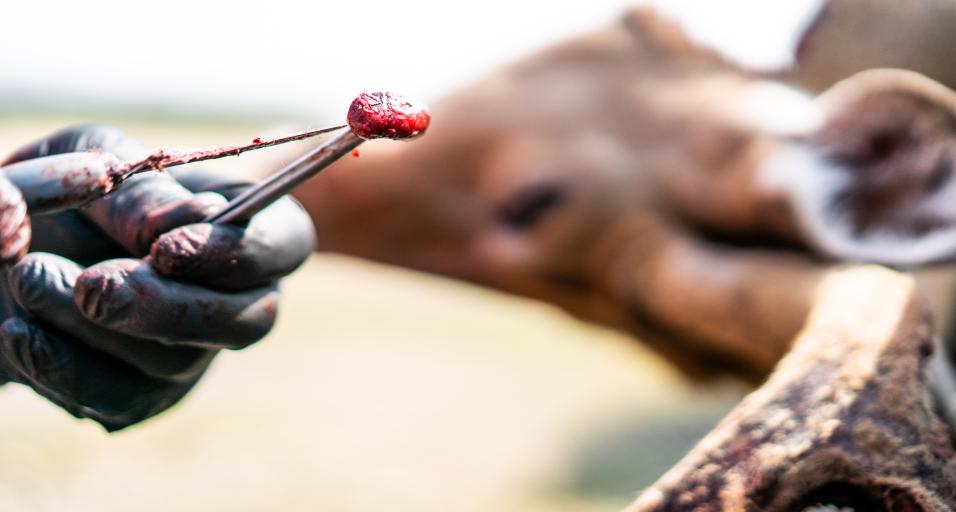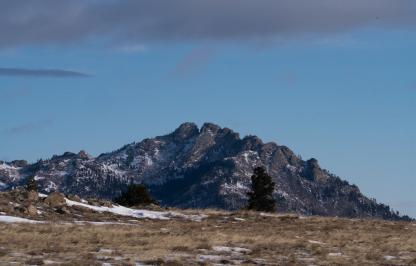The Wyoming Game and Fish Department needs help from hunters again this fall to collect lymph node samples from deer and elk for chronic wasting disease testing. For 2022, samples are requested across Wyoming in key deer and elk hunt areas, and six deer hunt areas are mandatory for samples.
The department has tracked the distribution and prevalence of CWD since 1997 to better understand how it affects the health of Wyoming’s deer and elk populations. Hunter-submitted samples are crucial to managing the disease in wildlife herds.
“Game and Fish is requesting samples from herds we’ve not addressed in a while, where we are trying to get a significant sample size so we can accurately determine what the CWD prevalence is in these herds,” said Hank Edwards, Game and Fish Wildlife Health Laboratory supervisor.
For 2022, Game and Fish is asking hunters to submit samples from within deer hunt areas 1-6, 59, 60, 64, 65, 66, 124, 130, 131, 134, 135, 138-146, 150-156, 157, 165, 171. Deer hunt areas 59, 60, 64, 65, 157 and 171 are mandatory testing areas for CWD. That means hunters who harvest mule deer in these areas must submit a lymph node sample for testing. Areas 157 and 171 are mandatory for both mule deer AND white-tailed deer samples.
“Mandatory areas are geared to places where it is difficult to get an adequate number of samples,” Edwards said. “Last year’s mandatory areas went very well. We had great compliance by the public and we were able to meet our surveillance goals. We couldn’t have done that without the public’s support.”
The elk hunt areas targeted for lymph node samples are 7, 19, 33, 34, 41, 45, 47-49, 67-71, 75, 77-85, 88-91, 93, 95, 96, 102-105, 120, 127.
Hunters outside of this year’s focused surveillance areas can still submit a sample for testing. Learn how to take a sample by watching a how-to video on the Game and Fish website and submit it alongside the CWD data sheet. The department can take a sample at any open game check station, the Game and Fish Headquarters or regional offices from 8 a.m. to 5 p.m., Monday through Friday.
As thanks for their efforts, hunters who submit testable lymph node samples are entered into a raffle to win top-notch prizes
Results from CWD testing are available online within three weeks. The only way for hunters to get results of their deer or elk’s CWD test will be to check online through the Game and Fish website. Hunters can expedite results within 10 working days for a $30 fee; contact the Wyoming State Veterinary Lab in Laramie at (307) 766-9925 for more information.
Continued monitoring of CWD over time is important to help Game and Fish understand the impacts of the disease on deer and elk. Samples also give the department information to inform future management actions — such as license types offered, license quotas, seasons and future disease monitoring protocols. CWD has been detected in most deer hunt areas throughout the state.
Game and Fish has a rotational sampling program designed to monitor CWD throughout the state by targeting specific hunt areas. The method provides the long-term data collection needed for CWD while not overwhelming the Wildlife Health Laboratory with testing.
Hunters also need to be aware of Wyoming carcass transport and disposal rules to prevent the spread of CWD within Wyoming and other states. Wyoming’s regulations require deer, elk and moose hunters transport only the following items within Wyoming:
- Deer, elk and moose can be transported to a camp, private residence for processing, a taxidermist, a processor or a CWD sample collection site in Wyoming provided the head and all portions of the spinal column remain at the site of kill or such parts are disposed in any approved landfill or approved incinerator in Wyoming. A listing of landfills that will accept waste from processed game animals and whole carcasses is available on the Game and Fish website.
- Cut and wrapped meat
- Edible portions with no portion of the spinal column or head attached
- Cleaned hide without the head attached
- Skull, skull plate or antlers that have been cleaned of all meat and brain tissue
- Teeth
- Finished taxidermy mounts
Whole deer, elk and moose carcasses cannot be transported out of Wyoming. The only parts approved to leave the state are edible portions with no part of the spinal column or head; cleaned hide without the head; skull, skull plate or antlers that have been cleaned of all meat and brain tissue; teeth; or finished taxidermy mounts. All hunters need to check with their home states for the rules about importing deer, elk or moose from Wyoming. Evidence of sex, species and horn or antler development retention is still required as per regulations.
More information and resources for hunters on CWD are available on the Game and Fish CWD webpage.


